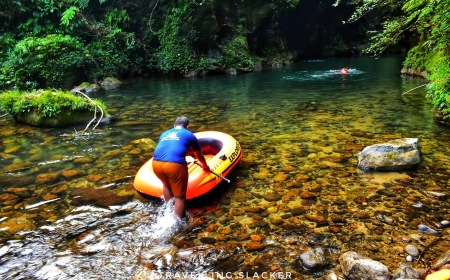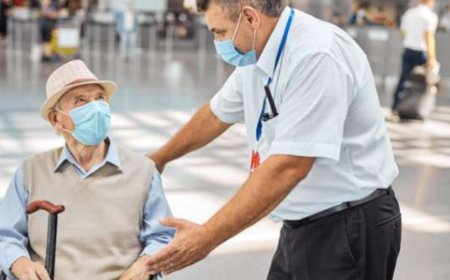How to Deal with Unexpected Weather on the Everest Base Camp Route
Hike to Everest Base Camp and immerse yourself in Sherpa culture and breathtaking landscapes.

Dealing with the surprise weather on theEverest Base Camp trek is a must for every hiker. The weather in the Himalayas can change in an instant, throwing a curveball even for those who think theyre ready for anything. One moment its sunny, and the next its snowing or pouring rain, so staying flexible is key.
Before you head out, it helps to learn a bit about the weather in the area, but remember, forecasts aren't perfect. When bad weather hits, your ability to adjust is crucial. Layering your clothing is important, so you can easily warm up or cool down. Waterproof jackets and boots are also essential to keep you dry. Always pack extra warm clothes and gear, just in case the weather turns sour.
Taking it slow during rough conditions can help you avoid slips or altitude sickness, which can get worse in tough weather. If things get really bad, find a place to wait it out until it gets better. Stay in touch with your guide for updates and help. Keeping a calm and positive attitude is as important as being physically prepared. By staying ready and adaptable, you can make the most of your adventure on the Everest Base Camp route, no matter what the weather throws at you.
Understanding Everest Base Camp Weather
Its really important to know what the weather is usually like on the way to Everest Base Camp. Conditions can change quickly because of the high altitude and rocky landscape. Spring and fall are the best times to trek, but dont be surprised by sudden storms, snow, and strong winds at any time. Temperatures can go from warm during the day to freezing at night. Knowing the local weather can help you prepare better and plan your daily hikes. Keeping an eye on the forecast lets you adjust your plans and stay safe.
Must-Have Gear for Weather Changes
Packing the right gear is your best shot at staying comfortable in unpredictable weather on the Everest Base Camp trek. Make sure to bring waterproof jackets and pants, warm layers, and solid boots to guard against rain, snow, and cold. Warm gloves, hats, and neck gaiters are also a must. A rain cover for your backpack and quick-dry clothes will give you extra protection. Trekking poles can help keep you steady on slippery paths. Investing in good-quality gear will help you cope with tough weather and stay safe from cold injuries. Being ready with the right equipment helps you adapt quickly when things change.
Adjusting Your Trekking Schedule
Being flexible with your trekking plans is important when youre facing unpredictable weather on the way to Everest Base Camp. If theres a storm or heavy snow, its smarter to slow down or take a break rather than push forward in unsafe conditions. Give yourself extra rest days to adjust and wait for weather improvements. Local lodges and teahouses can provide updates and shelter during bad weather, so make sure to plan some backup options. Listening to your guides and changing your pace can help you avoid injuries or altitude sickness from rushing in tough conditions. Staying adaptable keeps you safe while still letting you enjoy the beautiful surroundings.
Spotting Weather Warning Signs
Knowing what to look for can help you stay safe on the Everest Base Camp trek. Dark skies, sudden drops in temperature, stronger winds, or clouds gathering around mountains can mean a storm is coming. If rain or snow starts unexpectedly, its time to pay attention. Experienced guides are good at spotting these signs and will let you know what to do next. Trekkers should also be aware of these changes, so they can share concerns and get ready for worsening conditions. Noticing the early signs allows you to find shelter or add layers before things get worse.
Staying Safe in Extreme Weather
Extreme weather on the Everest Base Camp route can be dangerous, so your safety comes first. If you get caught in heavy snow, rain, or wind, look for shelter in lodges or safe spots. Stay away from exposed ridges or unstable ground where avalanches or landslides might happen. Keep drinking water and rest indoors to save your energy. Use warm clothes and emergency blankets to stay warm. Make sure your communication devices are charged for emergencies. Follow your guides advice closely. Staying calm helps you think straight and make good choices. Putting safety first means you can enjoy your adventure without serious risks.
Why Weather Updates Matter
Keeping up with the weather is super important when youre trekking to Everest Base Camp. You can get reliable weather updates through satellite phones, trekking companies, or local teahouses. It's a good idea to stay in touch with your guide and other trekkers so you can get quick alerts about storms or sudden temperature changes. There are also mobile apps for offline weather forecasts that are handy in remote spots. Being proactive about checking the weather helps you change plans quickly if needed, which keeps you safe in the unpredictable Himalayan conditions.
Dealing with Altitude Sickness in Bad Weather
Altitude sickness can get worse when the weather turns rough on the Everest Base Camp trail. Cold, wet, and windy days can make symptoms like headaches and dizziness hit harder. Its crucial to watch how youre feeling and not push through any sickness. If the weather is bad, resting at lower altitudes can help you recover and avoid problems. Staying warm and drinking enough water also helps your body adjust. If symptoms get serious, your guides can suggest medication or evacuation. Taking care of altitude sickness while managing tricky weather is key to staying safe and finishing your trek.
Eating and Drinking Right in Tough Weather
When unexpected weather hits on the Everest Base Camp trek, eating well and staying hydrated are essential. Cold and challenging conditions mean your body needs more energy. Opt for high-calorie, nutritious meals to keep your strength up. Drinking lots of water helps prevent dehydration, which can make altitude sickness worse and sap your energy. Warm drinks like herbal tea or soups are comforting when its cold. Dont forget to carry portable snacks for quick energy during slower weather days. Good nutrition and hydration can help you cope better with tough conditions and keep you ready for the trek.
Staying Mentally Strong Through Weather Setbacks
Unexpected weather can test your mental toughness on the Everest Base Camp trek. Storms or delays might bring frustration, but staying positive is key. Practicing deep breathing or mindfulness can help with stress. Be flexible and see setbacks as part of the journey. Chatting with fellow trekkers and guides can provide the emotional support you need. Setting realistic expectations helps you stay calm during disruptions. Being mentally prepared not only keeps you safe but also enhances your overall trekking experience. A strong mindset helps you tackle the mountain's unpredictable weather with confidence.
Learning from Others' Experiences
Getting tips from experienced trekkers and Sherpa guides is a huge help when facing Everest's unpredictable weather. They know the local climate, safe routes, and survival strategies that can cut down risks. Listening to their advice on gear, pacing, and how to handle emergencies prepares you for whatever surprises the weather throws at you. Guides value patience and caution during tough conditions. Connecting with seasoned trekkers can give you practical advice and encouragement for your trip. Learning from those who've tackled Everest before you can help you be smarter and safer on your journey.
Whats the Best Weather for Everest Base Camp?
The best time to trek to Everest Base Camp is usually in spring (late March to May) or autumn (late September to November). During these months, you can expect clearer skies, milder temperatures, and less rain, which makes for a good trekking experience. In spring, youll see beautiful rhododendrons and experience warmer weather. Autumn gives you crisp air and great views of the mountains. On the other hand, the monsoon season (June to August) brings heavy rain, muddy trails, and a higher chance of landslides. Winter is really cold and can have snow blocking the paths. Picking the right season is key to staying safe and enjoying the amazing views of the Himalayas.
How Has Climate Change Affected Everest Base Camp?
Climate change is having a big impact on Everest Base Camp and nearby areas. Warmer temperatures are melting glaciers quickly, which raises the chances of avalanches and unstable ground. Youll also see more unpredictable weather, with more storms and changing snow patterns that make trekking riskier. Thawing ground is affecting trails and the base camp itself. Plus, less snow means water sources for local communities are drying up. These changes are threatening nature and the safety of climbers. Its important to be aware and practice responsible trekking to help tackle climate change and protect Everests delicate environment for the future.
How to Acclimatize for Everest Base Camp?
Getting used to the altitude is super important to avoid altitude sickness on the Everest Base Camp trek. To acclimatize properly, take your time climbing and include rest days in your plan. Following the climb high, sleep low rule helps your body adjust to the thinner air. This means going up higher during the day and coming back down to sleep at a lower spot. Drink plenty of water, eat well, and avoid alcohol to help your body acclimate. Pay attention to how you feel and dont ignore warnings like headaches or dizziness. Many trekkers stay a few extra days at places like Namche Bazaar or Tengboche to get used to the altitude. Good acclimatization makes for a safer and more enjoyable trek.
How Do You Stay Warm at Everest Base Camp?
To stay warm at Everest Base Camp, youll need to wear layers meant for extreme weather. Start with moisture-wicking base layers to keep sweat off your skin. Then, add insulating layers like fleece or down jackets for warmth, and top it off with waterproof and windproof outer layers. Dont forget thermal gloves, hats, and good insulated boots to keep your extremities warm. A sleeping bag rated for very cold temperatures is a must for nights at camp. Keeping dry is essential because moisture makes you lose heat. Eating warm meals and drinking hot drinks helps you stay warm too. Its best to avoid alcohol and keep moving during the day to fend off the cold. With the right preparation, youll be comfy in the tough, high-altitude environment of the camp.
Conclusion
Knowing the best weather, being aware of climate change, and getting ready with acclimatization and warmth tips are key for a successful trek to Everest Base Camp. The mountain is stunning but tough, so it deserves respect and careful planning. By trekking responsibly and putting your safety first, you can have a rewarding experience while respecting both your adventure goals and the fragile Himalayan ecosystem. This thoughtful approach helps keep Everest beautiful for future adventurers while making your journey memorable.
































